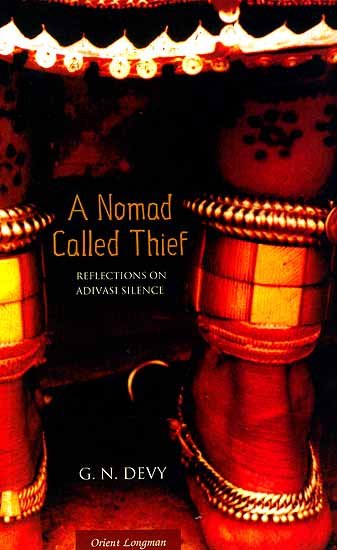Social activists and policy planners got together here [in August 2011] to listen to the woes of the Kalbelia community, better known by the folk dance form named after it, at a jan sunwai or public hearing. A nomadic community, also referred to as saperas or snake charmers, jogis and nats – going by their respective modes of livelihood – which over a period has turned “semi-nomadic” with a “nowhere to go” predicament now, has no takers in Rajasthan and elsewhere as they don’t count numerically and for the same reason politically.
It was during a month-long dharna early this year by Soochana Aur Rozgar Adhikar Ahbiyan activists here that the Kalbelias had surfaced, perhaps for the first time, at a public forum, along with other nomadic tribes of the region, to vent their grievances. In Rajasthan, the concentration of Kalbelia population is in Barmer, Pali, Ajmer, Chittorgarh, Bhilwara and Udaipur districts.
They were in their hundreds at the Udyog Maidan near Statue Circle here this past Tuesday – some with their snakes and beens (the wind instrument) and the women in their dancing attires. They were brought together by the Kalbelia Adhikar Manch. A distinguished panel which included Magsaysay Award winner Aruna Roy, Communist Party of India leader Annie Raja, Planning Commission member Narendra Jhadav, former Bihar Chief Secretary K. B. Saxena and social activists Kavita Srivastava and Nisha Siddu first listened to them and later addressed them.
A study carried out in 55 Kalbelia settlements in Barmer district revealed that 81 per cent of them had to beg for subsistence and 86 per cent of them do not have any caste certificate to avail of the benefits offered by various government schemes. It was found that 95 per cent of the families lived outside the villages and 42 per cent of them did not have a place to bury their dead. The community continues to be a victim of untouchability as 72 per cent of those surveyed talked about barbers refusing to cut their hair. Eighty per cent of the Kalbelia families were found to be landless.
The Kalbelias, once listed among the “criminal tribes” by the British, continue to be treated by the police with suspicion. In July, a 36-year-old Shyamlal under Kelwa police station of Rajsamand district committed suicide after police used third degree methods to inquire about his brother-in-law who was charged with some offence. Now the community is demanding registration of a case against the sub-inspector of Kelwa and compensation to the family. […]
“The Kalbelias are a deprived lot. They have no place to stay and even their dead are most often deprived of a proper repose. Their deras are away from the villages and they live in sub-human conditions,” said Ms. Roy, who later joined a delegation which submitted a memorandum to the Rajasthan Chief Minister.
Source: “Activists lend voice to abandoned dancing tribe” by Sunny Sebastian, The Hindu, 12 August 2011 – The Hindu
Address : https://www.thehindu.com/todays-paper/tp-national/activists-lend-voice-to-abandoned-dancing-tribe/article2349154.ece
Date Visited: 11 March 2024
Reports in the Indian press | List of periodicals included in this search >>
Search tips
Combine the name of any particular state, language or region with that of any tribal (Adivasi) community.
Add keywords of special interest (music, poetry, dance just as health, sacred grove and biodiversity); learn about the rights of Scheduled Tribes such as the “Forest Rights Act” (FRA); and the United Nations “Declaration on the Rights of Indigenous Peoples”, “Universal Declaration of Human Rights”, “women’s rights”, or “children’s right to education”.
Specify any other issue or news item you want to learn more about (biodiversity, bonded labour and human trafficking, climate change, ecology, economic development, ethnobotany, ethnomedicine, global warming, hunter-gatherers in a particular region or state, prevention of rural poverty, water access).
For official figures include “scheduled tribe ST” along with a union state or region: e.g. “Chhattisgarh ST community”, “Himalayan tribe”, “Scheduled tribe Tamil Nadu census”, “ST Kerala census”, “Particularly Vulnerable Tribal Group Jharkhand”, “PVTG Rajasthan”, “Adivasi ST Kerala”, “Adibasi ST West Bengal” etc.
In case the Google Custom Search window is not displayed here try the following: (1) toggle between “Reader” and regular viewing; (2) in your browser’s Security settings select “Enable JavaScript” | More tips >>
Note: hyperlinks and quotes are meant for fact-checking and information purposes only | Disclaimer >>

Reflections on Adivasi Silence and Voice by Ganesh [G.N.] Devy | Publications >>
A call for harnessing the potential of Denotified Tribes, Nomadic and Semi-Nomadic Tribes for national development: “India’s labour force must be liberated from an abhorrent colonial doctrine (‘criminality by birth’)” – Report and Recommendations of the Technical Advisory Group | “Adivasi”, “Tribals” and “Denotified tribes” (classifications in different states) >>
See also
Audio | Santali Traditional and Fusion Songs: Ghosaldanga Bishnubati Adibasi Trust – West Bengal
Crafts and visual arts | Masks
India’s tribal, folk and devotional music: Secular and ceremonial songs
Memory of the World Programme – Unesco
Music and dance | Musicology | Adivasi music and the public stage by Jayasri Banerjee
Video | Banam lutes and fiddles of the Santal people – Jharkhand & West Bengal
Video | Celestial Dancers of Manipur
Video | Cultural traditions of the Halakki people – Karnataka
Video | Khasi musical heritage of Meghalaya
Video | Kota women’s dance: Shivaratri celebrations – Nilgiris – Tamil Nadu
Video | Santali video album “Ale Ato” (Our Village, Part 1 of 2) – West Bengal
Video | South Gujarat tribal music documentation by Bhasha – Gujarat
Video | Tribes in Transition-III: “Indigenous Cultures in the Digital Era”
Video | Safe contents for educational use on many topics (music, visual arts and more)